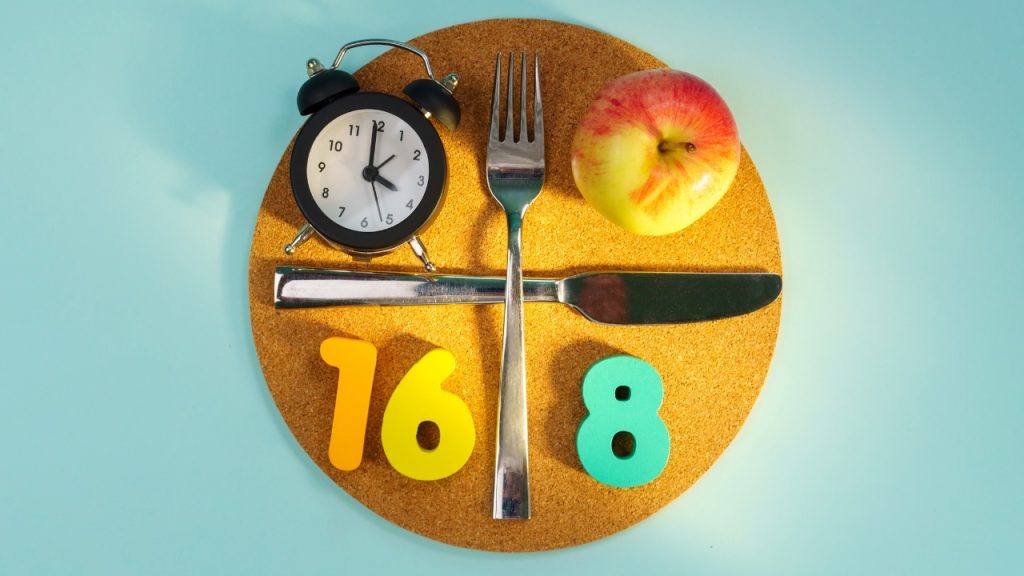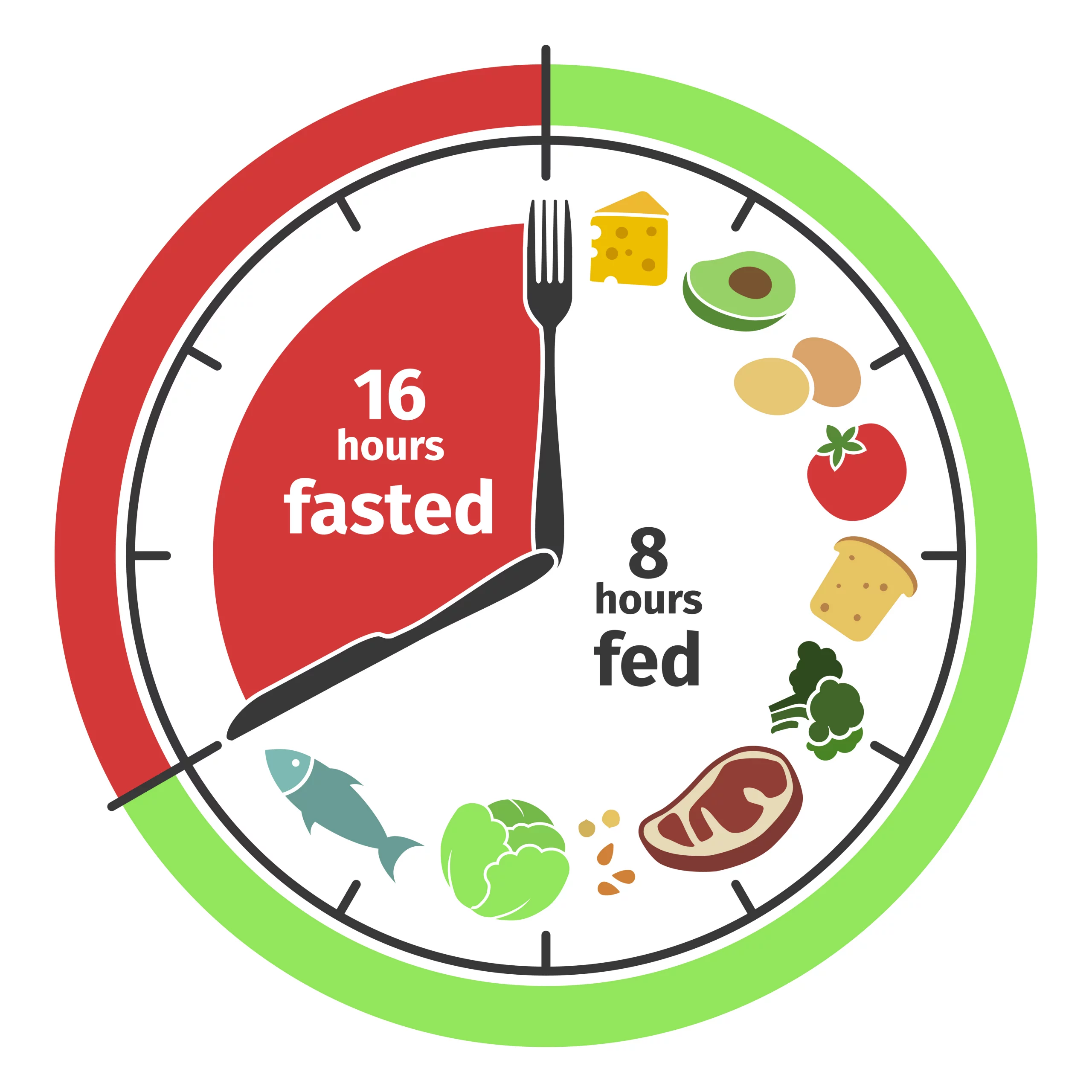Are you tired of complicated diet plans that leave you feeling restricted and overwhelmed? Intermittent fasting might be the simple, sustainable solution you’ve been searching for. The 16:8 method has become one of the most popular approaches to intermittent fasting, and for good reason – it’s flexible, effective, and easier to maintain than traditional restrictive diets.
In this comprehensive guide, we’ll walk you through everything you need to know about the 16:8 intermittent fasting method, from the science behind it to practical tips for getting started safely and successfully.
What is Intermittent Fasting?
Intermittent fasting (IF) isn’t about what you eat – it’s about when you eat. Rather than focusing on specific foods or calorie restrictions, intermittent fasting creates structured eating windows that alternate between periods of eating and fasting.
Unlike traditional diets that require you to eliminate entire food groups or count every calorie, intermittent fasting works by extending the natural fasting period that occurs while you sleep. This approach has been practiced for centuries across various cultures and religions, but modern science is now revealing the powerful health benefits it can provide.
Understanding the 16:8 Method
The 16:8 method is the most beginner-friendly form of intermittent fasting. Here’s how it works:
16 hours of fasting: This includes your sleep time plus additional hours where you don’t consume any calories.
8-hour eating window: During this period, you can eat your meals and snacks normally.
For example, if you choose to eat between 12 PM and 8 PM, you would fast from 8 PM until 12 PM the next day. The beauty of this method is that you’re already fasting for 7-9 hours while you sleep, so you only need to extend that period by a few more hours.
Popular 16:8 Schedules
The Late Breakfast Approach (12 PM – 8 PM)
- Skip breakfast
- First meal at noon
- Last meal by 8 PM
- Perfect for night owls and those who aren’t naturally hungry in the morning
The Early Dinner Approach (8 AM – 4 PM)
- Eat breakfast at 8 AM
- Last meal by 4 PM
- Great for early risers and those who prefer larger breakfasts
The Flexible Approach (10 AM – 6 PM)
- Light breakfast or brunch at 10 AM
- Dinner completed by 6 PM
- Balances social dining with morning fuel
The Science Behind 16:8 Intermittent Fasting
When you fast for 16 hours, several beneficial processes occur in your body:
Insulin Sensitivity Improvement: Extended fasting periods help lower insulin levels, making your body more efficient at using stored fat for energy. Research shows that intermittent fasting can improve insulin sensitivity by 20-31%.
Cellular Repair and Autophagy: During fasting, your cells initiate autophagy, a process where they remove damaged components and regenerate. This cellular “cleanup” may contribute to longevity and disease prevention.
Metabolic Flexibility: Your body learns to switch more efficiently between burning glucose (from recent meals) and fat (from stored reserves) for energy.
Growth Hormone Production: Fasting can increase growth hormone levels by up to 5 times, which supports muscle preservation and fat burning.
Health Benefits of the 16:8 Method
Weight Loss and Fat Reduction
The 16:8 method naturally creates a caloric deficit for many people by limiting the time available for eating. Studies show that people following 16:8 intermittent fasting typically reduce their caloric intake by 300-500 calories per day without consciously restricting food.
More importantly, the hormonal changes during fasting specifically target stubborn belly fat. Research indicates that intermittent fasting can lead to 4-7% reduction in waist circumference over 6-24 weeks.
Improved Heart Health
Multiple studies demonstrate that intermittent fasting can improve several heart disease risk factors, including blood pressure, cholesterol levels, and inflammatory markers. One study found that participants following 16:8 fasting for 12 weeks experienced significant reductions in blood pressure and improvements in heart rate variability.
Enhanced Brain Function
Fasting periods increase the production of brain-derived neurotrophic factor (BDNF), a protein that supports brain health and may protect against neurodegenerative diseases. Many practitioners report improved mental clarity and focus during fasting hours.
Better Blood Sugar Control
The 16:8 method can be particularly beneficial for people with prediabetes or type 2 diabetes. By giving your body extended breaks from processing food, you allow insulin levels to normalize and improve your body’s ability to regulate blood sugar.

Getting Started: Your First Week Guide
Day 1-2: Ease Into It
Don’t jump straight into 16 hours of fasting. Start with a 12-hour fast and gradually extend it by 30 minutes each day until you reach 16 hours. This gradual approach helps minimize side effects and increases your chances of long-term success.
Sample Schedule:
- Day 1: 12-hour fast (8 PM – 8 AM)
- Day 2: 12.5-hour fast (8 PM – 8:30 AM)
Day 3-5: Building the Habit
Continue extending your fasting window while paying attention to how your body responds. Some people experience mild hunger, headaches, or fatigue as their body adapts. These symptoms typically resolve within a few days.
Helpful Tips:
- Stay hydrated with water, herbal tea, or black coffee
- Keep busy during fasting hours to avoid thinking about food
- Plan your first meal to include protein and healthy fats for sustained energy
Day 6-7: Finding Your Rhythm
By the end of your first week, you should be close to or at your target 16:8 schedule. Focus on consistency rather than perfection – if you need to adjust your eating window for social events or schedule changes, that’s completely normal.
What to Eat During Your 8-Hour Window
The quality of food you eat during your eating window significantly impacts your results. While intermittent fasting doesn’t require specific food restrictions, following these guidelines will maximize your benefits:
Prioritize Whole Foods
Lean Proteins: Chicken, fish, eggs, Greek yogurt, legumes, and plant-based proteins help maintain muscle mass and keep you satiated.
Healthy Fats: Avocados, nuts, seeds, olive oil, and fatty fish provide essential nutrients and help control hunger.
Complex Carbohydrates: Quinoa, sweet potatoes, oats, and vegetables provide sustained energy without causing blood sugar spikes.
Fiber-Rich Foods: Vegetables, fruits, and whole grains support digestive health and help you feel full longer.
Sample Daily Meal Plan
First Meal (Breaking the Fast – 12 PM):
- Spinach and mushroom omelet with avocado
- Side of berries
- Green tea or black coffee
Afternoon Snack (3 PM):
- Greek yogurt with nuts and seeds
- Apple slices
Dinner (7 PM):
- Grilled salmon with roasted vegetables
- Quinoa pilaf
- Large mixed salad with olive oil dressing
Common Mistakes to Avoid
Overeating During Your Eating Window
Just because you have an 8-hour window doesn’t mean you should consume a day’s worth of calories in one massive meal. Eat normally-sized, balanced meals to avoid digestive discomfort and maintain steady energy levels.
Choosing Poor Quality Foods
Don’t use intermittent fasting as an excuse to eat processed foods, sugary snacks, or fast food. The quality of your nutrition directly impacts how you feel and your results.
Ignoring Hydration
Dehydration can worsen fasting side effects like headaches and fatigue. Aim for at least 8-10 glasses of water throughout the day, with extra attention during fasting hours.
Breaking Your Fast Too Quickly
When you haven’t eaten for 16 hours, your first meal should be gentle on your digestive system. Avoid immediately eating large, heavy, or very spicy meals.
Managing Side Effects and Challenges
Initial Hunger and Cravings
It’s normal to experience hunger during your first 1-2 weeks as your body adjusts to the new eating pattern. Try these strategies:
- Drink water or herbal tea when hunger strikes
- Stay busy with activities that don’t involve food
- Remember that hunger comes in waves and will pass
- Ensure your last meal includes adequate protein and healthy fats
Energy Fluctuations
Some people experience temporary energy dips as their body learns to efficiently use stored fat for fuel. This typically resolves within 2-3 weeks as metabolic flexibility improves.
Social Situations
Don’t let social events derail your progress. You can:
- Adjust your eating window occasionally to accommodate dinner plans
- Focus on socializing rather than eating at events
- Explain your eating schedule to friends and family for support
Sleep and Exercise Considerations
Most people find that 16:8 fasting doesn’t negatively impact sleep or exercise performance once they’re adapted. However, you may need to experiment with timing your workouts and adjusting your eating window to find what works best for your schedule.

Who Should Avoid 16:8 Intermittent Fasting
While the 16:8 method is generally safe for healthy adults, certain groups should consult with healthcare providers before starting:
- Pregnant or breastfeeding women
- People with a history of eating disorders
- Individuals with diabetes or other metabolic conditions
- Those taking medications that require food timing
- Children and teenagers
- People with chronic medical conditions
Tracking Your Progress
Success with intermittent fasting extends beyond just weight loss. Track multiple metrics to get a complete picture of your progress:
Physical Measurements:
- Weight (weekly, same day and time)
- Body measurements (waist, hips, arms)
- Progress photos
- How your clothes fit
Health Markers:
- Energy levels throughout the day
- Sleep quality
- Digestive health
- Mental clarity and mood
- Exercise performance
Behavioral Changes:
- Reduced food cravings
- Better portion control
- Improved relationship with hunger
- Enhanced meal satisfaction
Long-Term Success Strategies
Flexibility is Key
Life happens, and rigid adherence to any eating schedule isn’t always possible. The most successful intermittent fasters learn to be flexible while maintaining consistency most of the time. An 80/20 approach – following your 16:8 schedule 80% of the time – can still provide significant benefits.
Listen to Your Body
Pay attention to how you feel and adjust accordingly. If you’re consistently tired, irritable, or experiencing other negative symptoms after several weeks, you may need to modify your approach or consult with a healthcare provider.
Build Supporting Habits
Combine intermittent fasting with other healthy lifestyle habits for maximum benefit:
- Regular exercise (both cardio and strength training)
- Adequate sleep (7-9 hours per night)
- Stress management techniques
- Consistent meal planning and preparation
Consider Cycling
Some people benefit from cycling their intermittent fasting schedule – for example, following 16:8 for five days and eating normally on weekends. This approach can be particularly helpful for maintaining social flexibility while still gaining most of the benefits.
Frequently Asked Questions
Q: Can I drink coffee or tea during my fasting window? A: Yes, black coffee, plain tea, and herbal teas are fine during fasting. Avoid adding cream, sugar, or artificial sweeteners, as these can break your fast.
Q: What if I feel dizzy or weak during fasting? A: Mild symptoms are normal initially, but persistent dizziness or weakness may indicate you need to eat. Start with shorter fasting periods and gradually increase, ensuring you’re adequately hydrated and getting enough electrolytes.
Q: Can I exercise while fasting? A: Most people can exercise during fasting hours once adapted. Light to moderate exercise is generally fine, but listen to your body and consider timing intense workouts closer to your eating window.
Q: How long before I see results? A: Many people notice increased energy and reduced cravings within the first week. Weight loss typically becomes apparent after 2-4 weeks, while other health benefits may take 6-12 weeks to fully manifest.
Q: Is it okay to take supplements while fasting? A: Most supplements are fine during fasting, but fat-soluble vitamins (A, D, E, K) are better absorbed with food. Check with your healthcare provider about specific supplements and timing.
Conclusion: Your Journey to Better Health
The 16:8 intermittent fasting method offers a simple, sustainable approach to improving your health without the complexity of traditional diets. By working with your body’s natural rhythms and giving your digestive system regular breaks, you can experience benefits ranging from weight loss and improved energy to better metabolic health and mental clarity.
Remember, intermittent fasting is not a quick fix but a lifestyle approach that requires patience and consistency. Start slowly, listen to your body, and focus on building sustainable habits rather than pursuing rapid results.
The key to success with 16:8 intermittent fasting lies in finding a schedule that fits your lifestyle, choosing nutrient-dense foods during your eating window, and maintaining flexibility when life requires adjustments. With time and consistency, this approach can become a natural, effortless part of your daily routine.
As you begin your intermittent fasting journey, celebrate small victories along the way. Whether it’s your first successful 16-hour fast, increased energy levels, or improved relationship with food, each step forward is progress toward better health and wellness.
Your transformation starts with a single decision to try something new. Give yourself the gift of improved health through the simple yet powerful practice of 16:8 intermittent fasting.
